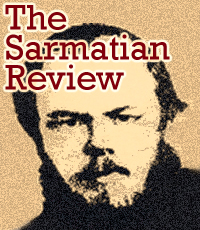| This Issue | Back Issues | Editorial Board | Contact Information |

BOOKS BOOKS and Periodicals Received
April 2005
Volume XXV, No. 2
“Głos prawdy i sumienia:” Kościół w pismach Cypriana Norwid, by Ryszard Zajączkowski. Wrocław: Fundacja na Rzecz Nauki Polskiej, 1998. Bibliography, index of names, English summary. 247 pages. ISBN 83-85220-89-5. Hardcover. In Polish.
The book looks at Poland’s most “mystical” and
untranslatable poet from the point of view of Christian philosophy rather than from a purely literary standpoint. Norwid can be compared to William Blake and Emily Dickinson, in the sense that his writings are similarly obscure and in need of a commentary. However, as Zajączkowski argues, Norwid was also a remarkably faithful interpreter of Catholic culture, and his poetry is in fact a proclamation of that culture. Zajączkowski further argues that, unlike his contemporary Adam Mickiewicz, Norwid never deviated from Church doctrine, articulating it instead in his highly original and idiosyncratic verse and prose.
In the English summary, the author points out that for Norwid the world possessed a “proecclesiastical structure” and thus was potentially peaceful and diverse yet tolerant. Rome remained the world’s spiritual capital even in the nineteenth century when Norwid’s discourse came into being. Norwid “regarded the papacy as the guardian of spiritual values and a political force accelerating democratization of the world.” Norwid also felt that, owing to Church doctrines, it was possible to initiate economic development in Europe. Wherever Church doctrine extended, it left behind (even as it was discarded or pushed aside) a comprehension of creative curiosity, friendship, and tolerance. These values were less prominent in other cultures, hence their economic backwardness by comparison to nineteenth-century Europe. It goes without saying that this was a slow development that came to full fruition in the modern age. Zajączkowski further elucidates Norwid’s understanding of the Eucharist and his concept of “the Mass of history” that has been going on ever since Incarnation.
This is not a book for beginners or for postmodernists.
Back to the April 2005 Issue
The Sarmatian Review
sarmatia@rice.edu
Last updated 5/25/05